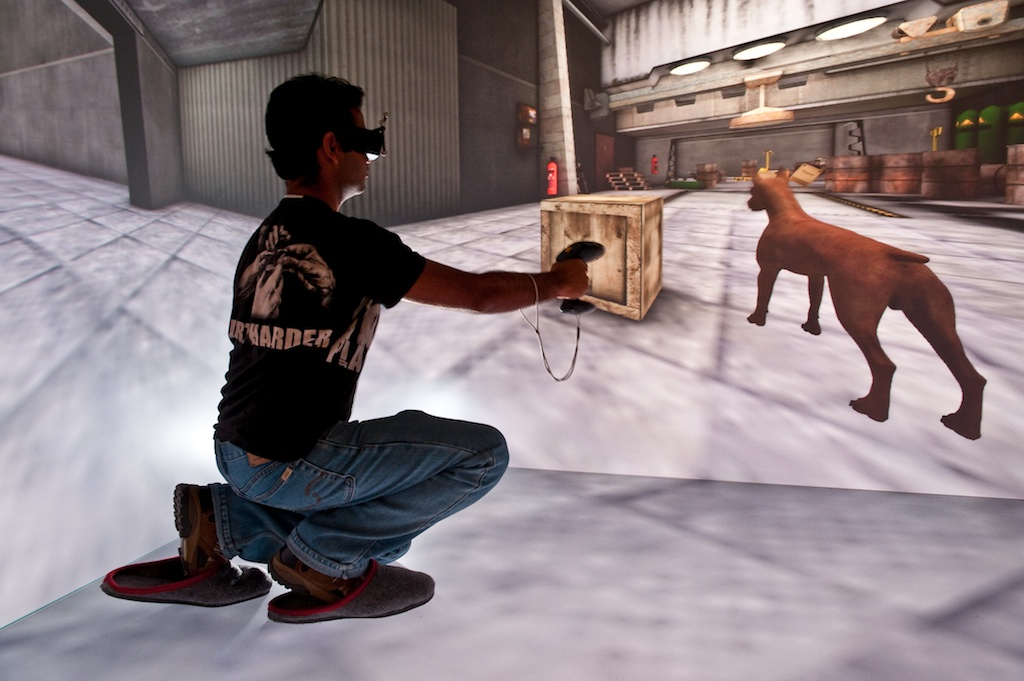Section: Partnerships and Cooperations
National Initiatives
ANR ALTA
Participants : Emmanuelle Chapoulie, Adrien David, Stefan Popov, George Drettakis.
The ANR ALTA project started in October 2011, and focuses on the development of novel algorithms for realistic and efficient global illumination. The project is coordinated by the Grenoble Inria group ARTIS (N.Holzschuch), and the Bordeaux Inria group MANAO (X. Granier) is also a partner.
Our participation is the study of error bounds for these algorithms and the development of interactive global illumination solutions that can be used in Virtual Reality solutions, for example in the context of the immersive space.
ANR DRAO
Participants : Emmanuel Iarussi, Adrien Bousseau.
The ANR DRAO is a young researcher project coordinated by Adrien Bousseau, in collaboration with the InSitu project team at Inria Saclay - Ile de France (W. Mackay and T. Tsandilas) and the MANAO project team (P. Barla and G. Guennebaud) and POTIOC project team (M. Hachet) at Inria Bordeaux - Sud Ouest. The goal of this collaboration is to develop novel drawing tools for amateurs as well as for expert designers and illustrators, combining expertise in Computer Graphics (REVES and MANAO) and Human-Computer Interaction (InSitu, POTIOC). This ANR project funds the PhD of Emmanuel Iarussi.
The first part of the project will be to observe how people draw with existing tools. To do so we will conduct observational studies where we will interview designers and illustrators and collect data by videotaping drawing sessions and by recording drawings with digital pens. In the second part of the project we will deduce from our observations new user interfaces and rendering algorithms that automate part of the drawing process and enrich 2D drawings with realistic rendering capabilities. We will combine computer vision and computer graphics techniques to estimate geometric information from sketches. We will then use this information to guide rendering algorithms that generate plausible depictions of material and lighting over the drawing. In the third part of the project, we plan to develop computer-assisted drawing lessons to teach amateurs to draw from photographs and 3D models. We will apply image analysis algorithms to estimate the structure of a photograph and use that structure as guidance for drawing. To summarize, the goal of the ANR DRAO project is to make amateurs more confident in their drawing skills and to allow expert designers to produce complex illustrations more effectively.
ADT Interact3D
Participants : Adrien David, George Drettakis.
This ADT involves half time software development for ARC NIEVE, and the other half general support to the new Immersive Space Gouraud-Phong in Sophia-Antipolis (supervised by Jean-Christophe Lombardo of the DREAM service). The main contribution was the complete rewrite of our VR application environment with the development of the Imerse software. This platform will allow first experiments, and the development of a generic Virtual Reality framework addressing neuroscience/psychology applications. This generic platform is based on osgVR which aims at a high-quality context abstraction to be usable in several domains, as well as distributed rendering capacities. These improvements, deployable for a variety of applications to come, are tightly coupled with the current ARC NIEVE, thus contributing to its implementation. Future prospects for the ADT Interact 3D include developing novel multimodal interaction techniques for example for gesture-based interaction etc.
ARC NIEVE: Navigation and Interfaces in Emotional Virtual Environments
Participants : Peter Vangorp, Adrien David, George Drettakis, Gaurav Chaurasia, Emmanuelle Chapoulie.
The goal of this joint research project is to develop and evaluate improved interfaces for navigation in immersive virtual environments (VEs) such as the 4-wall stereoscopic ISpace system in the Immersive Space Gouraud-Phong.
There is evidence of significant overlap in brain structures related to spatial memory and orientation and those related to emotion. We examine the influence of high-quality 3D visual and auditory stimuli on the emotions evoked by the virtual environment. Our study focuses on the phobia of dogs as a way to modulate emotion in audiovisual VEs (see Figure 13 ).
Navigation in VEs involves the use of different views, i.e., egocentric (“first person”) and allocentric (“bird's eye”) views during navigation tasks. We study appropriate visual representations for each view (for example, the level of realism ranging from abstract map-like rendering for top-down views to photorealistic rendering for first-person views), and appropriate transitions between the different views.
We develop an appropriate methodology to evaluate such navigation interfaces in stressful environments, based on the insights gained by the emotion modulation study in phobic settings. This novel methodology can be seen as a “stress-test” for navigation interfaces: if the navigation interfaces developed are successful even in stressful setups, they will definitely be successful under “normal conditions”.
ARC NIEVE has resulted in several publications this year: [21] , [13] .
|
This is a joint research project with Isabelle Viaud-Delmon (IRCAM, CNRS), Anatole Lécuyer and Maud Marchal (VR4I project team, IRISA-INSA/Inria Rennes - Bretagne Atlantique), and Jean-Christophe Lombardo (DREAM / Inria Sophia Antipolis). Interact3D (Section 8.1.3 ) is associated with this ARC.
National French Bilateral Collaboration
We have ongoing collaborations with Maud Marchal and Anatole Lécuyer (VR4I project team, IRISA-INSA/Inria Rennes - Bretagne Atlantique) [13] , [17] , and Bruno Galerne (ENST/ENS Cachan) [15] .



